With new technologies revolutionizing data collection, wildlife researchers are becoming increasingly able to collect data at much higher volumes than ever before. Now we are facing the challenges of putting this information to use, bringing the science of big data into the conservation arena. With the help of machine learning tools, this area holds immense potential for conservation practices. The applications range from online trafficking alerts to species-specific early warning systems to efficient movement and biodiversity monitoring and beyond.
However, the process of building effective machine learning tools depends upon large amounts of standardized training data, and conservationists currently lack an established system for standardization. How to best develop such a system and incentivize data sharing are questions at the forefront of this work. There are currently multiple AI-based conservation initiatives, including Wildlife Insights and WildBook, that are pioneering applications on this front.
This group is the perfect place to ask all your AI-related questions, no matter your skill level or previous familiarity! You'll find resources, meet other members with similar questions and experts who can answer them, and engage in exciting collaborative opportunities together.
Just getting started with AI in conservation? Check out our introduction tutorial, How Do I Train My First Machine Learning Model? with Daniel Situnayake, and our Virtual Meetup on Big Data. If you're coming from the more technical side of AI/ML, Sara Beery runs an AI for Conservation slack channel that might be of interest. Message her for an invite.
Header Image: Dr Claire Burke / @CBurkeSci

Explore the Basics: AI
Understanding the possibilities for incorporating new technology into your work can feel overwhelming. With so many tools available, so many resources to keep up with, and so many innovative projects happening around the world and in our community, it's easy to lose sight of how and why these new technologies matter, and how they can be practically applied to your projects.
Machine learning has huge potential in conservation tech, and its applications are growing every day! But the tradeoff of that potential is a big learning curve - or so it seems to those starting out with this powerful tool!
To help you explore the potential of AI (and prepare for some of our upcoming AI-themed events!), we've compiled simple, key resources, conversations, and videos to highlight the possibilities:
Three Resources for Beginners:
- Everything I know about Machine Learning and Camera Traps, Dan Morris | Resource library, camera traps, machine learning
- Using Computer Vision to Protect Endangered Species, Kasim Rafiq | Machine learning, data analysis, big cats
- Resource: WildID | WildID
Three Forum Threads for Beginners:
- I made an open-source tool to help you sort camera trap images | Petar Gyurov, Camera Traps
- Batch / Automated Cloud Processing | Chris Nicolas, Acoustic Monitoring
- Looking for help with camera trapping for Jaguars: Software for species ID and database building | Carmina Gutierrez, AI for Conservation
Three Tutorials for Beginners:
- How do I get started using machine learning for my camera traps? | Sara Beery, Tech Tutors
- How do I train my first machine learning model? | Daniel Situnayake, Tech Tutors
- Big Data in Conservation | Dave Thau, Dan Morris, Sarah Davidson, Virtual Meetups
Want to know more about AI, or have your specific machine learning questions answered by experts in the WILDLABS community? Make sure you join the conversation in our AI for Conservation group!
No showcases have been added to this group yet.
- @LisaHein
- | She/her
Conservationist with a focus restoration ecology/rewilding and botany, a keen birder and currently working in the Seychelles with giant tortoises


- 0 Resources
- 14 Discussions
- 6 Groups
- 0 Resources
- 0 Discussions
- 5 Groups
- @roonte
- | MR
passionate about applying science in solving real world problems. Stemming from a third world country perspective I revel in grassroot hands down interventions.
- 0 Resources
- 0 Discussions
- 2 Groups
Environmental Science graduate from Cal Poly SLO, dedicated to resource conservation and eager to learn more about how AI can influence global sustainability.
- 0 Resources
- 0 Discussions
- 2 Groups
Bsc in IoT Networks |MSc student in Advanced Engineering for Robotics & AI. AI projects on camera traps and edge bioacoustics for bird mapping. Open Source Contributor to Microsoft Camera Trap project. Nat Geo & Nature Conservancy marine conservation externship alumnus.



- 0 Resources
- 24 Discussions
- 1 Groups
PhD student
- 0 Resources
- 0 Discussions
- 8 Groups
- @Dauson_M
- | Mr
Dauson Msumange is a social enterpreneur, founder and director of Tanzania Eco-Tech And Conservation Hub (TEACH).

- 0 Resources
- 1 Discussions
- 23 Groups
- @team
- | team
Make the stories that make this life worth living.

- 0 Resources
- 2 Discussions
- 6 Groups
- @biolochris
- | He/Him
Conservation Biologist and Ocean Tech Entrepreneur
- 0 Resources
- 1 Discussions
- 3 Groups
- @nickjourjine
- | He/Him
Harvard University & University of Zurich
Postdoctoral researcher using passive acoustic monitoring, bioinformatics, and automated behavior tracking to understand animal sociality and its evolution. Interested in collaborations that bridge basic research and conservation.

- 0 Resources
- 1 Discussions
- 5 Groups
- @amatsika
- | Her/she
A biodiversity conservation researcher with immense interest in agroecology, alien and invasive species, human wildlife conflict, species conservation, ecosystems sustenance and restoration.
- 0 Resources
- 0 Discussions
- 2 Groups
I am a PhD student in Korea, and I am interested in self-adaptive software, human-in-the-loop systems, and AI modeling.
- 0 Resources
- 0 Discussions
- 2 Groups
Climate Change AI calls for applications for Innovation Grants regarding AI/ML research projects. Eligible applicants are principal investigators at accredited universities in OECD member countries.
12 August 2024
In this post, I describe an animal recognition demonstration app I developed for the iPhone. The “MegaDetector-Demo” app uses the latest “MegaDetector” animal detector model from PyTorch-Wildlife to identify animals,...
11 August 2024
To celebrate our 9th Annual #Tech4Wildlife Photo Challenge happening this week, we’re taking a look at past and current submissions that feature the fastest growing areas of conservation tech: movement ecology, AI,...
7 August 2024
We are thrilled to introduce our new horizon scan, which will chart the future of bioacoustics. By collectively prioritizing emerging innovations that could transform the field, we aim to build consensus, facilitate...
5 August 2024
Hi all, I've published a blog post on rapidly labeling camera trap data using ChatGPT for species identification and a simple object detection model to get the bounding boxes. While presented in Edge Impulse, this...
17 July 2024
We are recruiting an (extendable) 2-year postdoc in my group to develop new technologies (cameras, microphones, deep learning, etc) to track earthworm activity in the field.
16 July 2024
The Reversing Environmental Degradation in Africa and Asia (REDAA) Programme is seeking a consultant to look into current issues with AI to develop a better shared understanding of how AI and related technologies could...
11 July 2024
Aerial seeding with drones has great potential in forest restoration but faces enormous challenges to be efficient and scalable. Current protocols use blanket seeding throughout the area to be restored, meaning a high...
20 June 2024
Come join us at AIMS, and work on deep learning for bioacoustics research!
14 June 2024
The AI for Climate and Nature Grand Challenge initiative from the Bezos Earth Fund has opened a call for proposals for "exploring new ideas for multiplying the impact of climate and nature efforts using modern AI"
12 June 2024
The San Diego Zoo Wildlife Alliance's Burrowing Owl Recovery Program and Conservation Technology Lab seek a postdoctoral research associate to develop bioacoustic tools for monitoring the western burrowing owl...
11 June 2024
August 2025
event
September 2025
event
event
event
event
October 2025
event
event
event
December 2025
event
March 2026
March 2025
event
event
17 Products
Recently updated products
| Description | Activity | Replies | Groups | Updated |
|---|---|---|---|---|
| Hi Ethan, It's indeed a competitive area. My advice for you (and anybody else seeking a PhD supervisor)...Do background research on each individual potential supervisor and always... |
|
Early Career, AI for Conservation, Animal Movement, Climate Change | 2 months 4 weeks ago | |
| Hi everyone,What should we share or demo about Software Quality Assurance? Alex Saunders and I, the two Software QA people at Wildlife Protection Solutions (WPS) are going to... |
|
Software Development, AI for Conservation, Open Source Solutions | 2 months 4 weeks ago | |
| My name is Frank Short and I am a PhD Candidate at Boston University in Biological Anthropology. I am currently doing fieldwork in Indonesia using machine-learning powered passive... |
|
Acoustics, AI for Conservation, Animal Movement, Data management and processing tools, Early Career, Emerging Tech, Ethics of Conservation Tech, Protected Area Management Tools, Software Development | 3 months 1 week ago | |
| This looks like a great application, thank you! I wonder if they are planning to run this study in future years. |
|
AI for Conservation | 3 months 1 week ago | |
|
|
Latin America Community, Acoustics, AI for Conservation, Camera Traps, Drones, Early Career | 3 months 1 week ago | ||
| @LukeD, I am looping in @Kamalama997 from the TRAPPER team who is working on porting MegaDetector and other models to RPi with the AI HAT+. Kamil will have more specific questions. |
|
AI for Conservation, Camera Traps | 3 months 2 weeks ago | |
| Super happy to finally have Animal Detect ready for people to use. We are open for any feedback and hope to bring more convenient tools :) |
|
AI for Conservation | 3 months 2 weeks ago | |
| Hi Ștefan! In my current case, I am trying to detect and count Arctic fox pups. Unfortunately, Arctic fox does not seem to be included in the training data of SpeciesNet but... |
+16
|
AI for Conservation, Camera Traps | 3 months 2 weeks ago | |
| Interesting. Thanks for the explanation. Nice to hear your passion showing through. |
|
AI for Conservation, Camera Traps, Data management and processing tools, Open Source Solutions, Software Development | 3 months 2 weeks ago | |
| 📸 Do you use camera traps in your work? Take part in our survey!Hi everyone! I’m currently a final-year engineering... |
|
Camera Traps, AI for Conservation, Data management and processing tools, Open Source Solutions, Software Development | 3 months 2 weeks ago | |
| WILDLABS colleagues—My team at TNC is looking for support as we try to understand opportunities of AI applications for freshwater (eco)... |
|
AI for Conservation | 3 months 3 weeks ago | |
| Hi Adam! Sounds like you have your work cut out for you. I have not used radar systems or AI systems for this sort of detection, but there are methods using change detection... |
|
AI for Conservation, Drones, Wildlife Crime | 3 months 3 weeks ago |
SDZWA Conservation Tech Summer Fellowship
5 February 2025 9:09pm
Giving different types of labeled data to the community - solutions?
5 February 2025 4:19pm
PhD scholarship within environmental data science
3 February 2025 4:39pm
Webinar: Wildlife Drones’ Dragonfly – Revolutionizing VHF Tracking Technology
3 February 2025 4:31am
Automatic acoustic annotation (Deep Voice) - Looking for new projects and collaboration.
31 January 2025 4:28am
Software Developer - Key Conservation
28 January 2025 11:36pm
[deadline Jan 31] Climate Change AI workshop @ ICLR 2025 in Singapore
21 January 2025 6:33pm
BIOSPACE 2025
Nature Tech Unconference
Data science/analyst interested in volunteering for research or app development
17 January 2025 5:28am
Living Data 2025
16 January 2025 6:30pm
Looking for bird and bat audio datasets and related research for biodiversity AI project
8 January 2025 11:12am
15 January 2025 10:38pm
I have made a bird audio classifier for New Zealand birds. My dataset is the wrong region for you, but you're welcome to use any of my code. https://github.com/Wologman/Kaytoo The tool its self can be found here: https://drive.google.com/drive/folders/1X5j77w7qw9ExdnA2P7-RM-2FwgJcFjR0
Regards,
Olly
16 January 2025 9:38am
Hey, please find here a dataset about nocturnal bird calls in Europe
[2412.03633] NBM: an Open Dataset for the Acoustic Monitoring of Nocturnal Migratory Birds in Europe
Abstract page for arXiv paper 2412.03633: NBM: an Open Dataset for the Acoustic Monitoring of Nocturnal Migratory Birds in Europe
ICLR 2025
15 January 2025 4:58pm
Senior Firmware & Systems Engineer
15 January 2025 4:56pm
Postdoc on camera trapping, remote sensing, and AI for wildlife studies
15 January 2025 4:53pm
Thesis Collaboration
4 January 2025 5:15pm
7 January 2025 12:32pm
Hi Simon,
Did you already contact INBO? Both biologging and citizen science are big themes at INBO. Last year we had a master thesis on camera trapping invasive muntjac. You can send me a private message for more info!
14 January 2025 3:30pm
Hi Simon,
We're a biologging start-up based in Antwerp and are definitely open to collaborate if you're interested. We've got some programs going on with local zoo's. Feel free to send me a DM if you'd like to know more.
15 January 2025 8:30am
Hi Simon,
We (Reneco International Wildlife Consultants) have an ongoing collaboration with a local University (Abu Dhabi, UAE) for developing AI tools (cameratrap/drone images and video analyses) and biomimetic robots applied to conservation (e.g https://www.sciencedirect.com/science/article/pii/S1574954124004813 ). We also have a genetic team working on eDNA. Field experience could be possible, in UAE or Morocco.
Feel free to write me back if you may be interested and would like to know more
State of the art thermal imaging core and the zoo
28 October 2024 6:12pm
12 January 2025 9:04pm
I would also be interested - looking at starting a project that need observation of large african animals with nocturnal habits... Holy grail with unlimited funding would be a grid of 100's of cameras :-)
13 January 2025 9:15am
I love those numbers 😀 indeed a holy grail. I’ll send you a private mail.
13 January 2025 9:23am
@HeinrichS there’s still time for you or anyone else to make a funding submission to the wildlabs 2025 grants ❤️❤️❤️
I haven't applied for wildlabs funding, but I would love for others to apply that want to use my systems. My preference goes to those who want to use the most units :-)
Webinar: Drone-based VHF tracking for Wildlife Research and Management
9 January 2025 11:45pm
Which LLMs are most valuable for coding/debugging?
25 September 2024 5:48pm
4 October 2024 7:53pm
Thanks, Lampros!
29 October 2024 11:10am
When it comes to coding and debugging, several large language models (LLMs) stand out for their value. Here are a few of the most valuable LLMs for these tasks:
1. OpenAI's Codex: This model is specifically trained for programming tasks, making it excellent for generating code snippets, suggesting improvements, and even debugging existing code. It powers tools like GitHub Copilot, which developers find immensely helpful.
2. Google's PaLM: Known for its versatility, PaLM excels in understanding complex queries, making it suitable for coding-related tasks as well. Its ability to generate and refine code snippets is particularly useful for developers.
3. Meta's LLaMA: This model is designed to be adaptable and can be fine-tuned for specific coding tasks. Its open-source nature allows developers to customize it according to their needs, making it a flexible option for coding and debugging.
4. Mistral: Another emerging model that shows promise in various tasks, including programming. It’s being recognized for its capabilities in generating and understanding code.
These LLMs are gaining traction not just for their coding capabilities but also for their potential to streamline the debugging process, saving developers time and effort. If you want to dive deeper into the features and strengths of these models, you can check out the full article here: Best Open Source Large Language Models LLMs
9 January 2025 8:51pm
thanks kristy! super helpful list.
Conservation International - AI Innovation Manager
7 January 2025 6:26pm
What the mice get up to at night
6 January 2025 8:06am
7 January 2025 1:09pm
And I see now they can walk vertically up walls like Spider-Man.
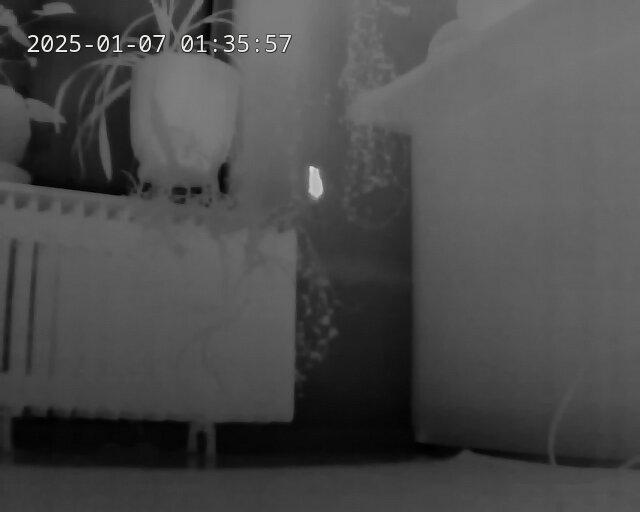
PhD Scholarship - Urban Kākā Ecology and Conservation
6 January 2025 4:24pm
PhD Scholarship - Recognising Taonga with AI: Facial Recognition for Kākā Conservation Management
6 January 2025 4:22pm
DeepForest Code Walkthrough - Airborne Machine Learning for Biodiversity Monitoring
6 January 2025 3:24pm
Ai for soil nutrient analysis
24 December 2024 6:42pm
30 December 2024 3:46pm
We'd love to see this added to The Inventory, our wiki-style databse of conservation tech tools, R&D projects, and organizations! Check out the user guide to learn more about how to add a page for your app. Give a shout with any questions!
5 January 2025 1:10am
Thank you for the comments. The app is not made available on the app or google store yet. It is applicable on android systems and does not need a high level skill to operate however one would need to be taught how to use the app and make meaning of the data.
5 January 2025 1:17am
New PhD - Drones, seaweeds & climate change
30 December 2024 11:33am
Pytorch Wildlife v5 detection in thermal
28 December 2024 10:35am
29 December 2024 8:08pm
I added plain old motion detection because megadetector v5 was not working well with the smaller rat images and in thermal.
This works really well:

Also, I can see really easily where the rat comes into the shed, see this series: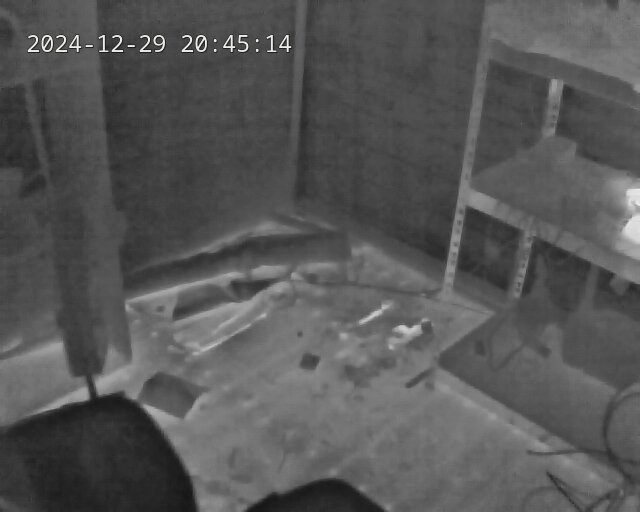
Just visible
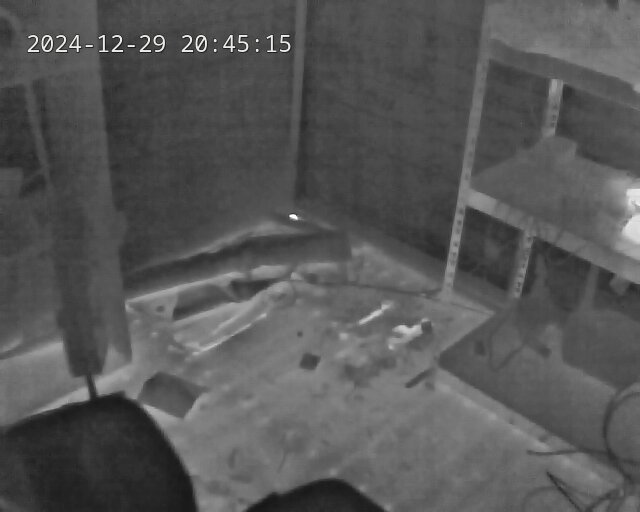
Clearly visible.
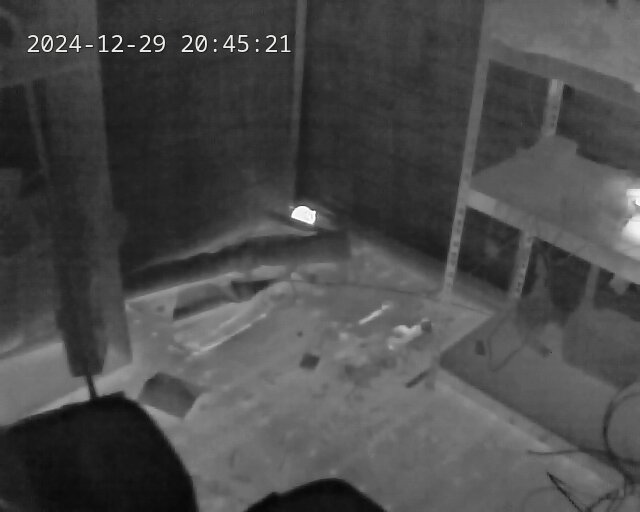
So now I have a way to build up a create thermal dataset for training :-)
Announcement of Project SPARROW
18 December 2024 8:01pm
3 January 2025 6:48pm




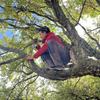


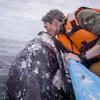




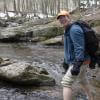


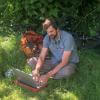
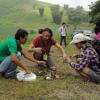




























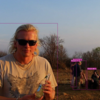


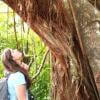




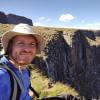







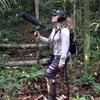

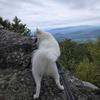
13 January 2025 5:28pm
Thank you very much!